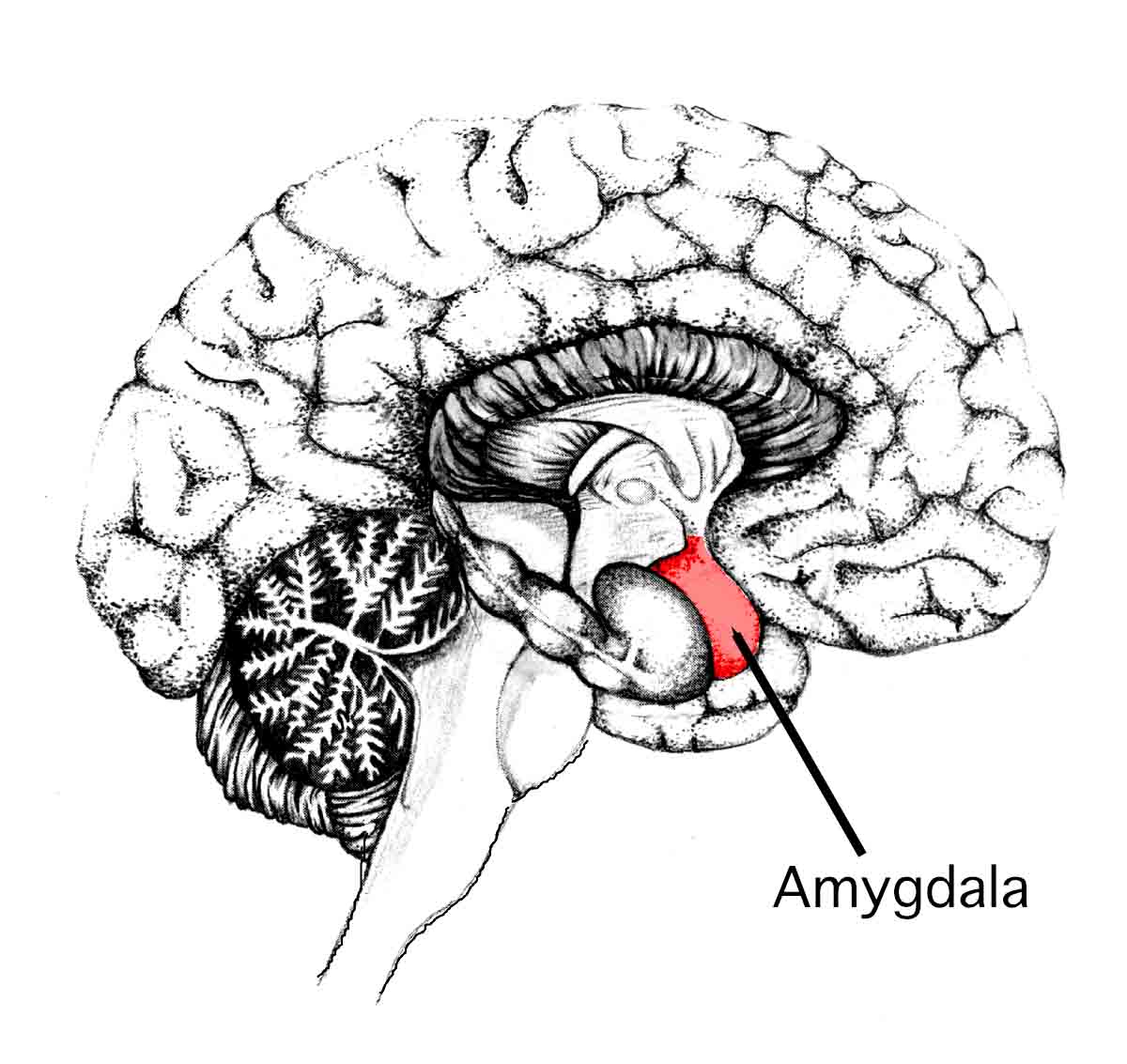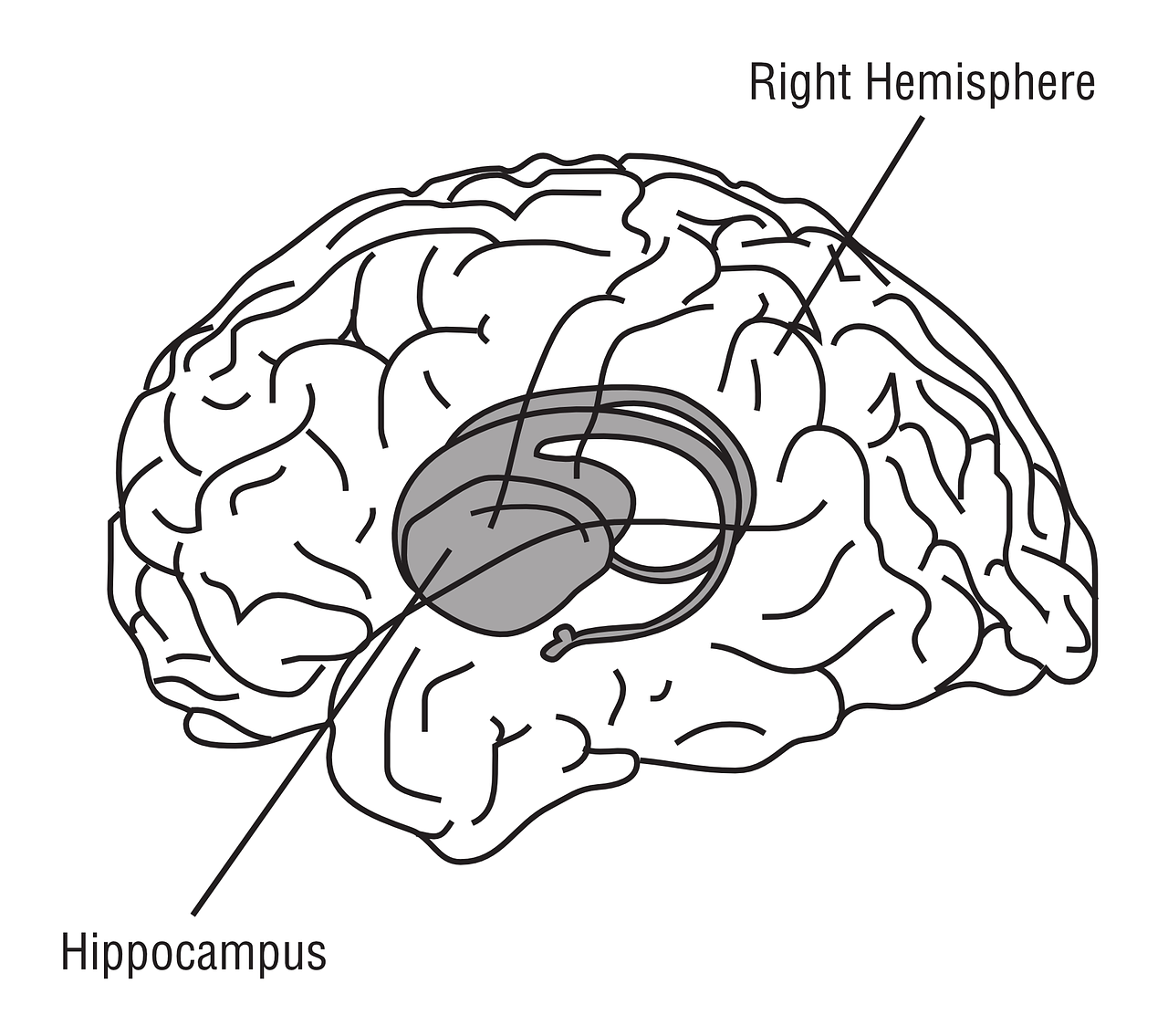Difference Between Amygdala and Hippocampus
The amygdala is a region of the brain that is concerned with the functions of motivation and emotion. The hippocampus is an area of the brain which functions in creating some types of memory, is involved in learning and in bringing about certain behaviors linked to emotional responses.

What is Amygdala?
Definition of Amygdala:
The amygdala is a region of the brain that is involved with the functions of motivation and emotion.
Structure of Amygdala:
The amygdala consists of a pair of structures, each of which has the shape of an almond; these two structures are found in the middle side of the temporal lobe of the brain. Each pair making up the amygdala consists of three nuclei. The nuclei are a group of specific nerve cells (neurons) that work together; in the amygdala these three are: centromedial, cortical-like, and basolateral groups. The amygdala is part of the limbic system of the brain, which consists of several structures dealing with various aspects of memory and emotion.
Function of Amygdala:
The amygdala plays an important role in emotion, and is important in emotional behaviors such as socialization and anxiety. It has also been found that the amygdala functions in behavior linked to receiving a reward versus avoiding punishment. The amygdala does at times work in synergy with the hippocampus to bring about emotional behaviors, particularly when it comes to such responses linked to anxiety and depression.

What is Hippocampus?
Definition of Hippocampus:
The hippocampus is a part of the brain which functions in creating some types of memory, helps with learning, and brings about certain behaviors linked to emotional responses.
Structure of Hippocampus:
The hippocampus can be divided into three regions, the ventral, dorsal, and intermediate. The hippocampus is also found in the middle region of the temporal lobe but it has a seahorse shape that is different from that of the amygdala. Like the amygdala, it is part of the limbic system but it has a different shape and function. The similar location to the amygdala can lead to confusion of the hippocampus with the amygdala.
Function of Hippocampus:
A function of the hippocampus is memory of one’s environment and space, as well as memory of events and facts. The hippocampus is, therefore, very important in the ability to learn and remember. However, while the hippocampus is involved in creating memories, it is not the site where they are stored, and the hippocampus also is not involved in forming all types of memories. Spatial memory and declarative memory are not the only functions of the hippocampus; it is also believed to interact with certain parts of the amygdala when it comes to anxiety and depression. In fact, the basolateral part of the amygdala interacts with the ventral part of the hippocampus.
Difference between Amygdala and Hippocampus?
Definition
The amygdala is a part of the brain that is involved with emotions and motivation. The hippocampus is a region of the brain which functions in creating some types of memory, and is important in learning, and certain emotional responses.
Location
The amygdala occurs as two areas found in the middle part of the temporal lobes of the brain in front of the hippocampus. The hippocampus occurs as two areas found in the middle part of the temporal lobes behind the amygdala.
Shape of Structure
The amygdala is the shape of an almond. The hippocampus is the shape of a seahorse.
Anatomical divisions
The three divisions of the amygdala are the centromedial nuclei, cortical-like nuclei, and basolateral nuclei. The three divisions of the hippocampus are ventral, dorsal, and intermediate regions.
Receives stimuli from
Stimuli or input are received by the amygdala from the hippocampus and prefrontal cortex. Stimuli or input are received by the hippocampus from the amygdala and the hypothalamus.
Function
Emotion, such as aggression and fear, and behaviors linked to rewards and punishment, are functions of the amygdala. The functions of the hippocampus include the memory of facts and events as well as spatial memory; it also, therefore, important in learning and it brings about certain behaviors linked to emotional responses.
Table comparing Amygdala and Hippocampus

Summary of Amygdala Vs. Hippocampus
- The amygdala and hippocampus are both structures in the brain that can interact at times and are found in the middle region of the temporal lobe.
- The close connection between the hippocampus and amygdala both in terms of their structure and function can make it easy to confuse the two, and they do at times work together as part of the limbic system.
- The amygdala is almond-shaped and more involved in emotion while the hippocampus is seahorse-shaped and functions in certain types of memory and learning.
- The hippocampus is related to the amygdala in that certain emotions such as the anxiety response and also depression show a connection between both of these structures.
- Difference Between Rumination and Regurgitation - June 13, 2024
- Difference Between Pyelectasis and Hydronephrosis - June 4, 2024
- Difference Between Cellulitis and Erysipelas - June 1, 2024
Search DifferenceBetween.net :
Leave a Response
References :
[0]Byrne, John H. "Learning and memory." McGovern Medical School, 1997-2020, https://nba.uth.tmc.edu/neuroscience/m/s4/chapter07.html
[1]Salzman, C Daniel. "Amygdala." Encyclopedia Britannica, 2020, https://www.britannica.com/science/amygdala
[2]Yang, Ying, and Jian-Zhi Wang. "From structure to behavior in basolateral amygdala-hippocampus circuits." Frontiers in neural circuits 11 (2017): 86.
[3]Image credit: https://cdn.pixabay.com/photo/2013/07/12/14/17/hippocampus-148151_1280.png
[4]Image credit: https://commons.wikimedia.org/wiki/File:Amygdala.jpg
